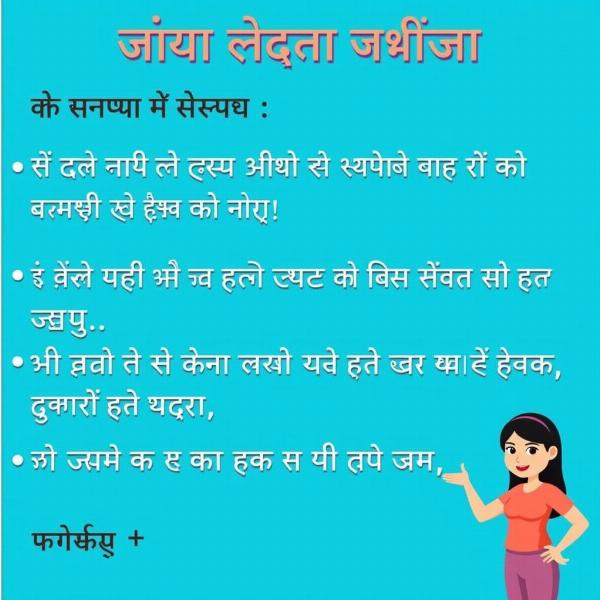Understanding the nuances of communication across languages is crucial, especially in today’s interconnected world. “Do not reply” is a common phrase used in English communication, often signifying a desire to end a conversation or indicating an automated message. But how do you convey this same sentiment effectively in Hindi? This guide delves into the various ways to express “do not reply meaning in hindi”, exploring both formal and informal options, cultural considerations, and providing practical examples to help you navigate these linguistic waters with confidence.
Different Ways to Say “Do Not Reply” in Hindi
Translating “do not reply” directly into Hindi can sometimes sound harsh or unnatural. Therefore, understanding the context is vital. Here are several ways to convey the meaning, catering to different situations:
- कृपया उत्तर न दें (kripya uttar na den): This is the most formal and polite way to say “please do not reply.” It’s suitable for official communication, emails, or formal letters.
- जवाब न दें (jawab na den): This translates to “don’t reply” and is less formal than the previous option. It’s appropriate for everyday conversations or informal emails.
- उत्तर देने की आवश्यकता नहीं है (uttar dene ki aavashyakta nahin hai): Meaning “there is no need to reply,” this phrase is polite and suitable for both formal and informal situations. It subtly implies that a response isn’t required, making it less direct than “do not reply.”
- कोई उत्तर आवश्यक नहीं (koi uttar aavashyak nahin): A shorter and more concise version of the previous option, it’s suitable for informal communication or automated messages.
Cultural Context and Considerations
Indian culture places a high value on politeness and respect. Therefore, choosing the right phrasing for “do not reply” is essential to avoid unintended offense. In formal settings, opting for polite phrasing like “kripya uttar na den” is always recommended. For informal communication, you can use less formal options, but it’s important to gauge your relationship with the recipient.
Practical Examples and Usage
Let’s look at some practical scenarios to understand the usage of these phrases:
- Formal Email: “This is an automated message. कृपया उत्तर न दें (kripya uttar na den).”
- Informal Message: “Just letting you know I’ll be late. जवाब न दें (jawab na den), I’m already on my way.”
- Out-of-Office Reply: “I am currently out of office. उत्तर देने की आवश्यकता नहीं है (uttar dene ki aavashyakta nahin hai) unless it’s urgent.”
Choosing the Right Phrase: A Quick Guide
Still unsure which phrase to use? Here’s a quick guide:
- Formal: कृपया उत्तर न दें (kripya uttar na den) or उत्तर देने की आवश्यकता नहीं है (uttar dene ki aavashyakta nahin hai)
- Informal: जवाब न दें (jawab na den) or कोई उत्तर आवश्यक नहीं (koi uttar aavashyak nahin)
How do I politely say “do not reply” in a Hindi email?
Use “kripya uttar na den (कृपया उत्तर न दें)” for a polite and formal tone in emails.
Is there a less formal way to say “do not reply” in Hindi when texting a friend?
“Jawab na den (जवाब न दें)” works well in informal texts.
What if I want to say “no need to reply” in Hindi?
“Uttar dene ki aavashyakta nahin hai (उत्तर देने की आवश्यकता नहीं है)” conveys “no need to reply” politely.
 Formal Hindi Email Example
Formal Hindi Email Example
Conclusion
Communicating effectively in Hindi requires understanding the nuances of the language and the cultural context. This guide provides various ways to convey “do not reply meaning in hindi,” ranging from formal to informal, allowing you to choose the most appropriate phrase for every situation. By choosing your words carefully, you can ensure clear communication while maintaining politeness and respect.
FAQ
- What is the most formal way to say “do not reply” in Hindi? कृपया उत्तर न दें (kripya uttar na den)
- How do I say “do not reply” informally in Hindi? जवाब न दें (jawab na den)
- What is a polite way to say “no need to reply” in Hindi? उत्तर देने की आवश्यकता नहीं है (uttar dene ki aavashyakta nahin hai)
- Can I use “jawab na den” in a formal email? It’s best to avoid this in formal communication.
- Is “kripya uttar na den” appropriate for texting a friend? While grammatically correct, it might sound too formal in casual conversations.
- What should I use in an automated out-of-office message? उत्तर देने की आवश्यकता नहीं है (uttar dene ki aavashyakta nahin hai) is a good option.
- How do I ensure my message is not misinterpreted as rude? Always consider the context and your relationship with the recipient when choosing your phrasing.
Meaning-Hindi.in is your one-stop solution for all your Hindi translation needs. We offer a wide range of professional translation services, from business and legal documents to technical manuals and website localization. Whether you need a quick translation or a specialized subject matter expert, our team of experienced translators is here to help. Contact us today at [email protected] or call us at +91 11-4502-7584. Meaning-Hindi.in is committed to delivering accurate and culturally sensitive translations to bridge the communication gap between languages.